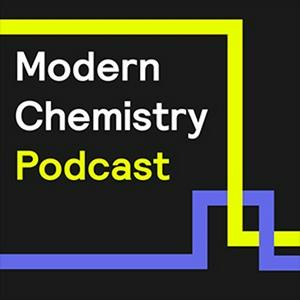Amanda Morris – Energy from sunlight.
Amanda has a BS degree in Chemistry from Penn State University, and PhD in Chemistry from Johns Hopkins University and conducted post-doctoral research at Princeton University prior to her tenure at Virginia Tech.Amanda’s research focuses on how to convert solar power into usable energy, or fuel, and useful materials or chemicalsYou will hear the following terms used during the interview. I've included some descriptions here. MOFs / Metalo-organic frameworks – Compounds made of metal ions, or clusters, connected to organic ligands, creating specific structures. They are often poruous materialsArtificial photosynthesis – A human-designed process that creates energy from Co2, water and sunlight, mimicking the same process which occurs naturally in plants.Catalysis – Increasing the rate of a chemical reaction by adding a catalyst.CO2 – Carbon Dioxide, one of the major greenhouse gases, and one of the molecules used by plants to create energy from photosynthesis.Reducing / reduction – the gain of electrons, or a decrease in the oxidation state of an ion (or at specific sites in a molecule).Oxidation / oxidizing - the loss of electrons, or an increase in the oxidation state of an ion (or at specific sites in a molecule).Redox – A chemical reaction where the oxiadtaion states of atoms are changed. Typically the transfer of electrons leads to oxidation of one chemical component in the reaction, and the reduction of other chemical components.Heterogenous surface – A non-uniform surface, which allows different chemical reactions to occur at different points.Turnover number – The number of moles of substrate (a measure of the total number of molecules) that a catalyst can convert before becoming inactivated.Nano particles – A particle of matter in the range of 1 to 100 nm in diameter.Protons – A sub-atomic particle with a positive electric charge of +1e, present in the nucleus of every atom.Electron - A sub-atomic particle with a negative electric charge of -1e, which display properties of both particles and waves.Solar photons – Particles of light emitted from the Sun.Chlorophyll – A word to describe any one of a number of related green pigments found in plants, algae and bacteria. Chlorophyll absorbs energy from sunlight and, along with other molecules, uses that sunlight to provide energy for plant cells, ultimately through the oxidation of water.Chromophore – The part of a molecule that is responsible for its color. Amanda is contactable on social media, and you can find them via on LinkedIn https://www.linkedin.com/in/amanda-morris-1a11b621/Amanda is @amorri28 on Twitter - https://twitter.com/amorri28Amanda’s lab page at Virginia Tech is https://chem.vt.edu/people/faculty/teaching-and-research/amorris.html – a great starting point for more information.Our theme music is "Wholesome" by Kevin MacLeod (https://incompetech.com)Music from https://filmmusic.ioLicense: CC BY (http://creativecommons.org/licenses/by/4.0/) Connect with me (Paul) at https://www.linkedin.com/in/paulorange/H.E.L. group can be found at www.helgroup.com online,on LinkedIn at https://www.linkedin.com/company/hel-group/ on Twitter, we're @hel_group, https://twitter.com/hel_groupor search for us on Facebook
